
All categories
Featured selections
Trade Assurance
Buyer Central
Help Center
Get the app
Become a supplier

(50107 products available)














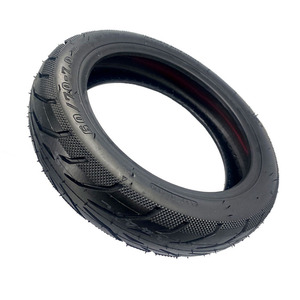
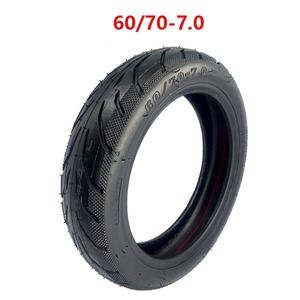
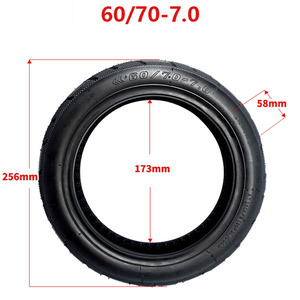
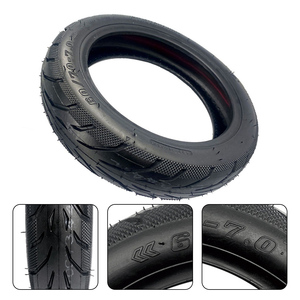
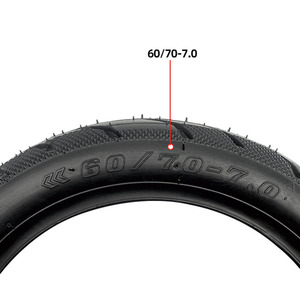
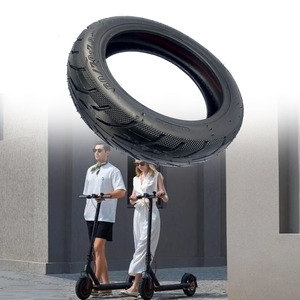







Every seasoned rider will adhere to the mantra that tires are the scooter. Tires arguably have the most significant impact on a scooter's performance and safety. For this reason, it's crucial to choose the right tires for the right service. Fortunately, 3.50 10-inch scooter tires come in a variety of types, each with its own set of advantages and disadvantages. Here are some of them:
All-terrain scooter tires
These tires are ideal for off-road and all-terrain electric scooters. They are designed to offer impressive grip and stability on a variety of ground surfaces, including gravel, dirt, sand, and asphalt. All-terrain tires have large, knobby tread patterns that are closely spaced to minimize vibrations and rolling resistance when riding on paved roads. The tire's deep lugs provide excellent traction on loose gravel and dirt, allowing the scooter to dig in. This all-terrain tire is perfect for adventure-seeking scooter riders.
Smooth tires
3.50 10 smooth tires are designed to provide a seamless and smooth riding experience. They are great for high-speed performance and racing. The main distinguishing feature of these tires is their slick tread pattern, which has very little or no tread. This design maximizes the tire's contact area with the road, providing exceptional grip on dry asphalt. As a result, users can enjoy sharper handling, faster acceleration, and higher top speeds. Unfortunately, smooth tires have poor grip and braking performance on wet surfaces. They also have a shorter lifespan and wear out faster compared to other tire types.
Street scooter tires
These are standard tires that come with most kick scooters. They are designed for urban and city commuting. Street scooter tires are not too hard and not too soft, making them ideal for different road conditions. They perform well on asphalt, concrete, and brick-paved roads. The tread design typically features a symmetric or slightly directional pattern with shallow grooves that provide good grip, stability, and wear resistance. These tires are excellent for daily commutes, short-distance travel, and urban mobility. They balance performance, durability, and affordability.
Scooter tire size 3.50-10 is a common tire size for many types of scooters, including electric scooters, with specifications as follows:
Tire Width
The first number in the tire size, 3.50, indicates the width of the tire in inches. These tires are 3.50 inches wide. Tire width affects scooter performance and handling. Wider tires provide more traction and stability but may be noisier and less efficient. For tighter turns and better acceleration, a scooter with narrow tires may be preferable.
Tire Diameter
The diameter of the tire is measured by the second number in the tire size. The 10 in the 3.50-10 tire size indicates that the tire is 10 inches in diameter. The tire size is important because it must match the scooter's wheel size. Scooter tire sizes that are too small or too big won't fit properly and can cause handling and stability issues.
Tire Aspect Ratio
Unlike car tires, where the aspect ratio is listed, scooter tires have a standard aspect ratio. For the 3.50-10 tires, the aspect ratio is about 70. This means that the tire's height is 70% of its width. The aspect ratio affects the tire's performance and handling characteristics. Lower aspect ratios provide better cornering and stability at high speeds, while higher aspect ratios offer a smoother ride.
Tread Pattern
The tread pattern is an important consideration when choosing scooter tires. Tread patterns are designed to provide traction and performance in different riding conditions. Tires with aggressive tread patterns are suitable for off-road riding, while tires with less aggressive tread patterns perform better on paved roads. The tread pattern also affects tire wear and noise levels.
Load Rating
The load rating indicates the maximum load the tire can safely carry. For 3.50-10 tires, the load rating is typically around 220-240 lbs. This load rating is suitable for most scooters and their riders. However, if the scooter is used for delivery or other commercial purposes, consider tires with a higher load rating.
Speed Rating
The speed rating indicates the maximum speed the tire can safely achieve. For 3.50-10 tires, the speed rating is typically L (75 mph) or M (81 mph). These speed ratings are suitable for most scooters and their riders. However, if the scooter is used for racing or other high-speed applications, consider tires with a higher speed rating.
Tire Compound
Tires are made from different types of rubber compounds, each with unique properties. Softer compounds provide more traction and grip but wear out faster. Harder compounds last longer but offer less traction. The tire compound should be chosen according to the riding style and the conditions under which the scooter is used.
Regular maintenance is important to ensure optimal tire performance and safety. Here are some maintenance tips for the 3.50-10 scooter tires:
When purchasing 3.50-10 scooter tires, buyers should consider the following factors to meet their customers' needs better.
Load capacity
Different tire sizes and constructions have varying load ratings. The load capacity refers to the maximum weight a tire can carry when inflated to the proper pressure. Buyers should consider their customers' typical loads and add some buffer before settling on a tire size.
Speed rating
Every 3.50-10 tire has a speed rating that denotes the maximum speed it can safely maintain. The speed rating should be in accordance with the scooter's top speed. For instance, a tire with a speed rating of L (120 km/h) is suitable for most standard scooters. However, for high-performance or electric scooters, tires with a speed rating of P (150 km/h) or higher are recommended.
Tread pattern
Buyers should get different tread patterns to suit various riding needs. Generally, tires with aggressive patterns offer better off-road traction, while those with minimal grooves provide a smoother ride on paved roads. Furthermore, the channeling, ribs, and blocks of a tire's tread design impact its grip, noise, and wear rate.
Seasonal conditions
When buying tires for specific weather conditions, buyers should check the rubber's compound and tread design. Summer tires offer superior dry and wet traction, while winter tires provide more grip in snowy or icy conditions due to their softer rubber and deeper treads.
Terrain compatibility
Buyers should check the type of scooter and its common terrain before purchasing tires. For instance, an all-terrain tire is perfect for off-road and on-road conditions, such as sand, dirt, and pavement. However, a tire optimized for road biking may not perform well in extreme environments.
Brand reputation
Buyers should get tires from reputable brands known for quality, consistency, and reliability. They can read online reviews and seek recommendations from mechanics or other scooter owners to find trustworthy tire manufacturers.
Changing a 3.50-10 tire on a scooter is a straightforward process that can be accomplished with the right tools and a little mechanical knowledge. Before beginning, make sure to have the following tools on hand:
Follow these steps to DIY and change scooter tires:
Q1: What does the tire marking 3.50-10 mean?
A1: The numbers in the tire size indicate the tire's width and diameter. In this case, the tire has a width of 3.50 inches and a diameter of 10 inches.
Q2: Can I switch to a different tire size for my scooter?
A2: Only if the scooter allows for a different tire size. Always consult the owner's manual or a professional before making tire size changes.
Q3: How can users check tire pressure on 3.50-10 tires?
A3: Tire pressure can be checked using a tire pressure gauge. It's essential to check the tire pressure when the tires are cold for accurate readings.